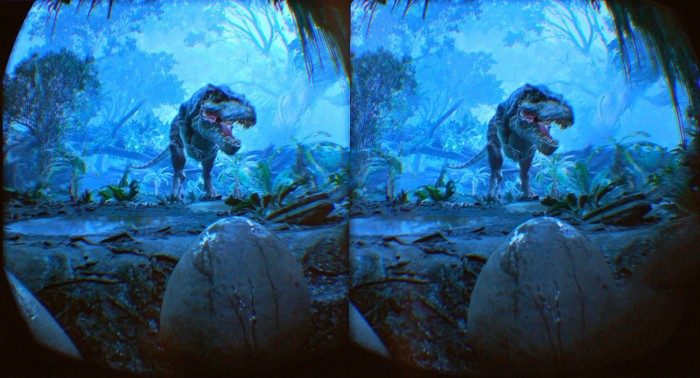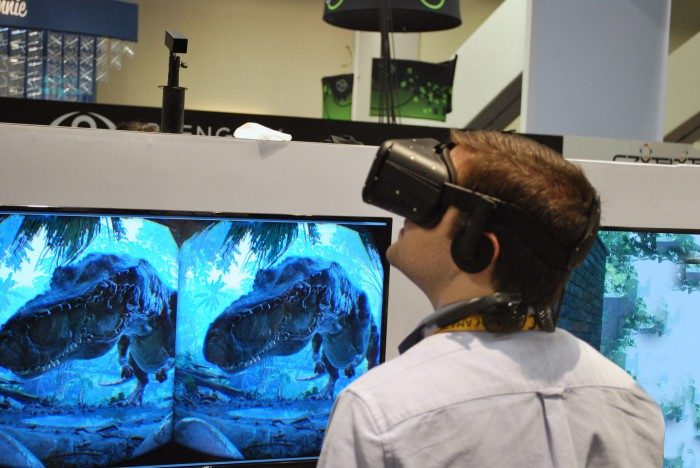At GDC 2015, game developer and CryEngine creator Crytek was showing an impressive virtual reality experience on the Oculus Rift Crescent Bay prototype. But it would seem that the company has much more up their collective sleeve than a mere demo or Rift support for their engine.
“50 people?” I asked. “Like five zero?” I knew Crytek had toyed with VR in the past, but I had no idea they’d committed such resources to the endeavor. While Crytek’s VR Design Director Patrick Esteves played a bit coy after telling me the size of the team working on VR, 50 people could only mean one thing—Crytek is working on full-featured VR experiences.
“We’re investing a lot of time and money into doing VR right,” he teased. “We aren’t announcing anything, but we’re investigating a lot of different things.”
Crytek Managing Director Faruk Yerli was even more explicit when speaking with Gamespot.
“…we hope to one day deliver a fully-fleshed VR experience,” Yerli said.
And it isn’t just talk. At GDC 2015, Crytek showed a new virtual reality experience built with CryEngine 3. Back to Dinosaur Island, as it’s called, took 20 members of Crytek’s VR team some 45 days to make, Esteves told me. What’s more, the company showed the experience using Oculus’ latest ‘Crescent Bay’ prototype—which is not released to the public—a clear indicator that the company is close with Oculus.


“X-Isle was something Crytek did to get started. ‘There’s this new frontier in gaming… let’s get that mojo going again’,” he said of the studio’s mindset.
Rather than just a pretty experience, Crytek used the demo to explore means of interaction in VR.
First was the ability to dodge a giant insect who hovered around my head and would swoop in for a sting. It seems obvious when you can actually step around within a VR space, but the ability to dodge does require significant design considerations, like hitboxes, timing, and a proper signal from the enemy that an attack is coming.
The second method of interaction came when a T. rex appeared from the depths of the prehistoric forest and approached me after a cliche roar. With every stomp, the world around me shook and the foliage reacted convincingly. Initially it seemed like the beast was going in for the kill—after all, I was standing in its nest—but eventually it backed off a bit and just stared at me. As I moved my head, it mirrored my movements with its own head, as though it was watching and reacting. It was an interesting take on a similar but more subtle mechanic which we’ve seen before where virtual characters will track you with their gaze.
By the end of the demo, the T. Rex had run off and I heard a cracking noise behind me. I turned around to see that the eggs in the nest were beginning to hatch right as the scene faded to black. Dun dun dunnnn.
It’s exciting that Crytek has a team of 50 working on VR within the studio, but the company also makes CryEngine, and third-party developers are surely interested to know when they can start building VR experiences of their own.
Esteves told me that part of the process of creating Back to Dinosaur Island was an initial integration of the latest Rift tech, but now the studio has to take their proprietary work and make it ready for third-party CryEngine developers.
“[the next step is to] generalize the code, then we integrate it into the SDK, so for partners and licensees who want to do VR stuff—probably not in the next update, but in the one after that—they’ll get our code.”
It seems that the company won’t be limiting CryEngine’s VR support to Oculus either; Esteves told me that Crytek intends to support as many VR platforms as possible, though as far as attracting VR devs, they’ve got quite the competition from the likes of Unity and Unreal Engine which both went free last week.


